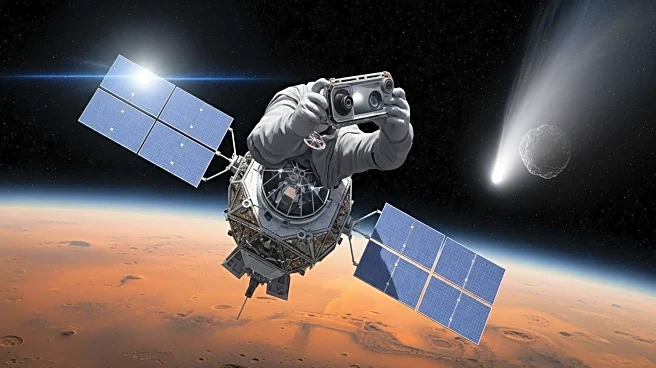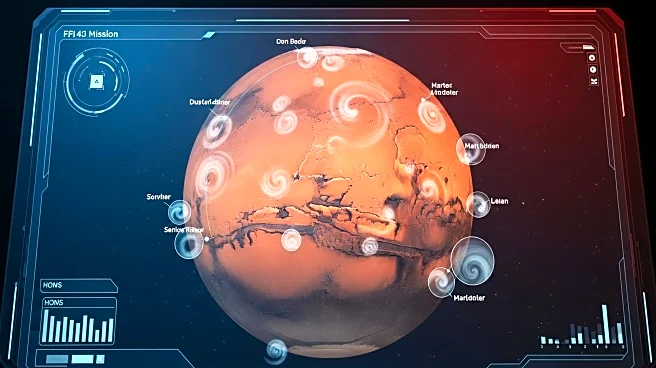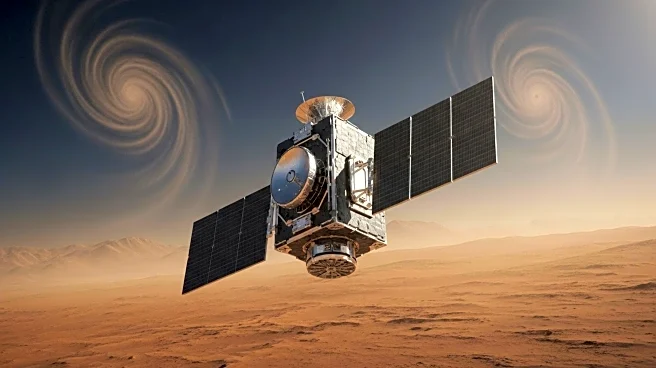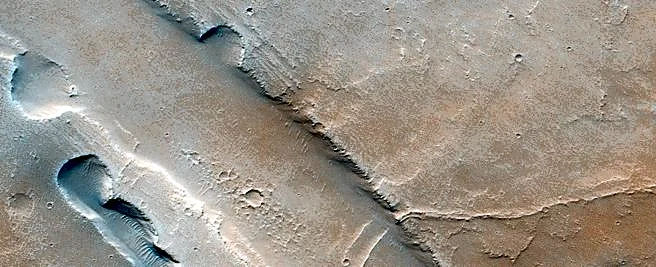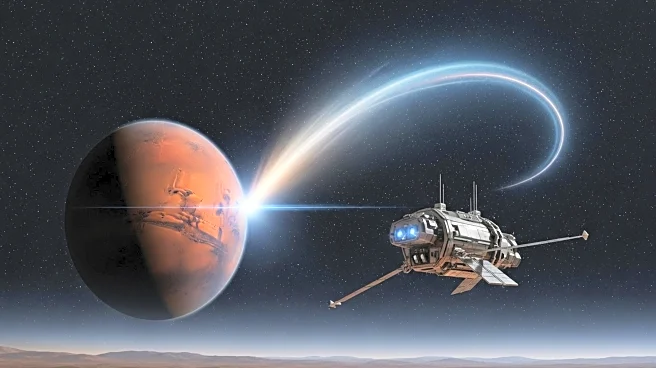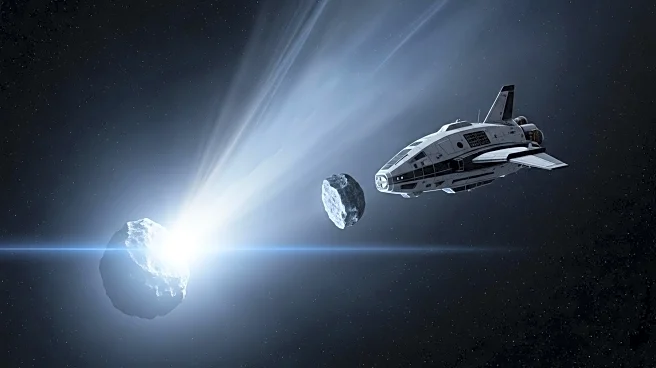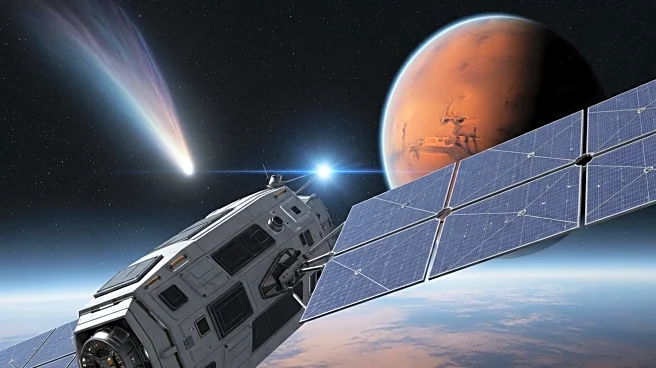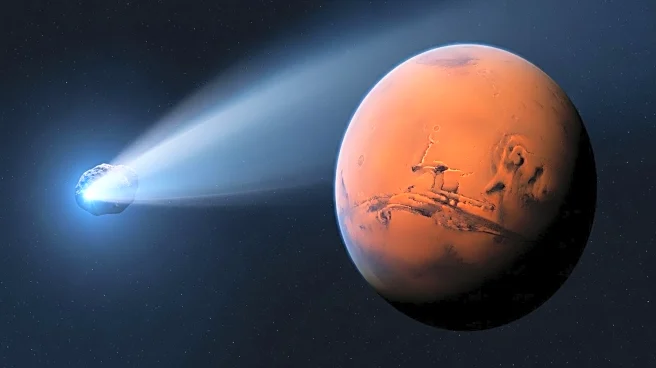What's Happening?
Scientists have tracked 1,039 dust devils on Mars using data from the European Space Agency's Mars Express and ExoMars Trace Gas Orbiter. This research, published in Science Advances, provides a comprehensive view of how dust is lifted and transported across Mars. The study reveals that Martian winds are stronger than previously thought, with dust devils reaching speeds of up to 158 km/h. This new understanding of Martian weather is crucial for future exploration missions.
Why It's Important?
The findings offer critical insights into Mars' climate, which is essential for planning future missions. Understanding wind patterns and dust activity can help in selecting safe landing sites and designing equipment to withstand Martian conditions. The data also enhances climate models, providing better forecasts of Mars' weather, which is vital for mission planning and execution.
What's Next?
The catalog of dust devils is a public resource, continuously updated with new images. This data will aid in planning the 2030 landing of the ExoMars Rosalind Franklin rover, ensuring it avoids the global dust storm season. Researchers will continue to analyze the data to refine climate models and improve predictions of wind patterns on Mars.
Beyond the Headlines
This study highlights the innovative use of existing technology to gather new insights. By turning what was once considered digital noise into valuable data, researchers have opened new avenues for understanding Martian climate. This approach underscores the potential for re-evaluating existing data with fresh perspectives to uncover hidden information.

